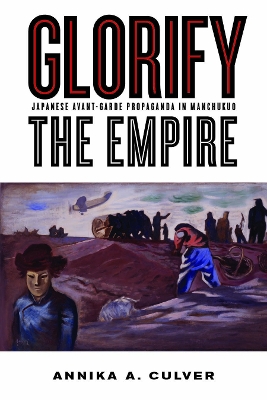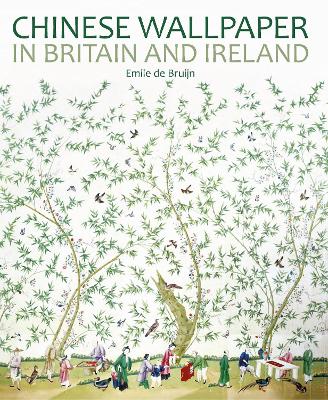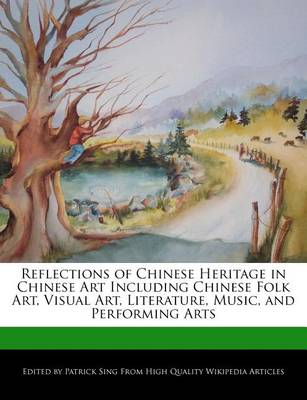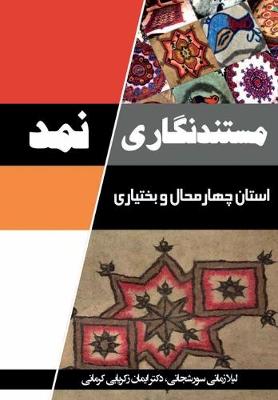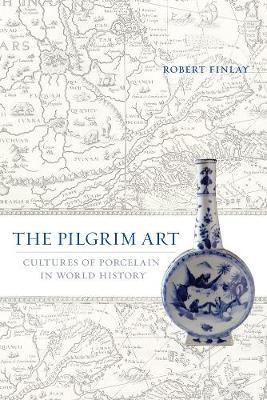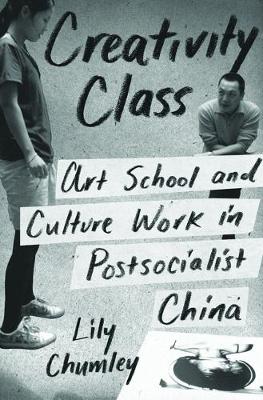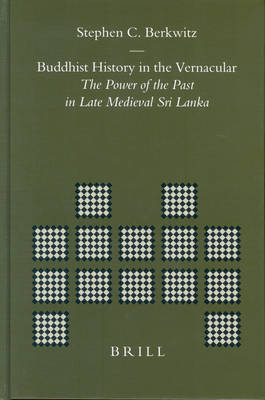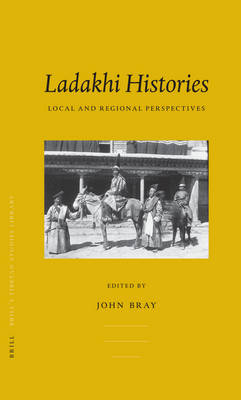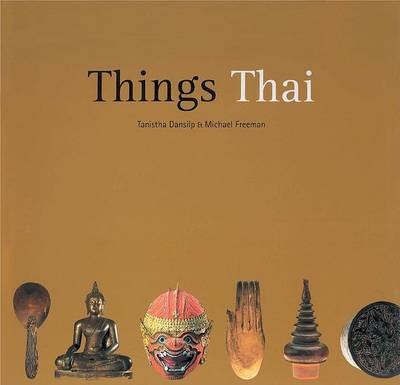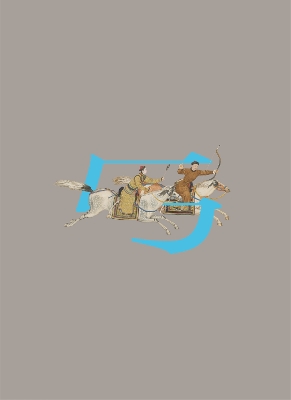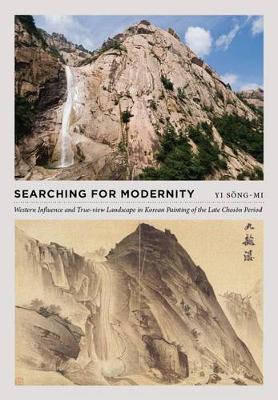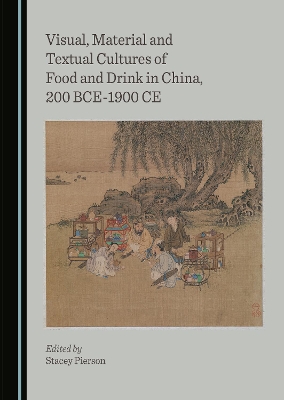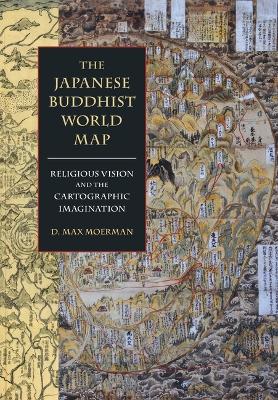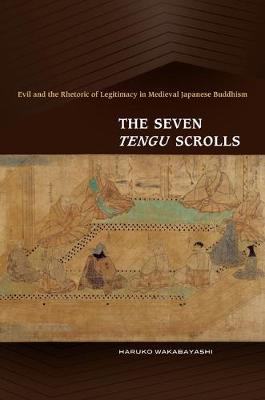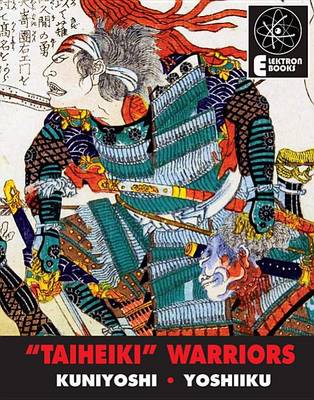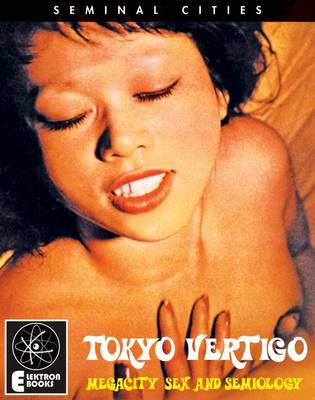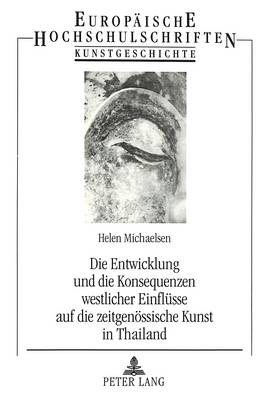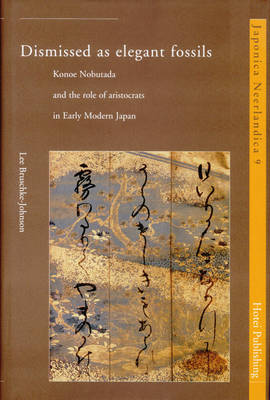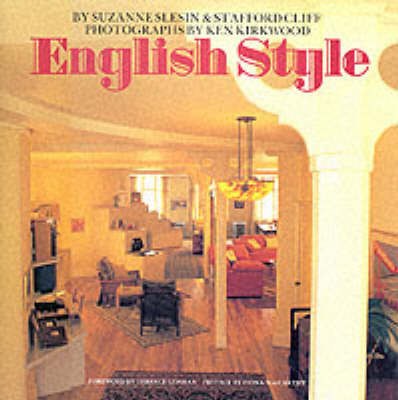In the 1930s and '40s, Japanese rulers in Manchukuo enlisted writers and artists to promote imperial Japan's modernization program. Ironically, the cultural producers chosen to spread the imperialist message were previously left-wing politically. In Glorify the Empire, Annika A. Culver explores how these once anti-imperialist intellectuals produced avant-garde works celebrating the modernity of a fascist state and reflecting a complicated picture of complicity with, and ambivalence toward, Japan...
Chinese Wallpaper in Britain and Ireland (National Trust)
by Emile de Bruijn
Chinese wallpaper has been an important element of western interior decoration for three hundred years. As trade between Europe and China flourished in the seventeenth century, Europeans developed a strong taste for Chinese art and design. The stunningly beautiful wall coverings now known as `Chinese wallpaper' were developed by Chinese painting workshops in response to western demand. In spite of their spectacular beauty, Chinese wallpapers have not been studied in any depth until relatively r...
Kyoto (Spatial Habitus: Making and Meaning in Asia's Architecture)
by Matthew Stavros
Kyoto was Japan's political and cultural capital for more than a millennium before the dawn of the modern era. Until about the fifteenth century, it was also among the world's largest cities and, as the eastern terminus of the Silk Road, it was a place where the political, artistic, and religious currents of Asia coalesced and flourished. Despite these and many other traits that make Kyoto a place of both Japanese and world historical significance, the physical appearance of the pre-modern city...
Reflections of Chinese Heritage in Chinese Art Including Chinese Folk Art, Visual Art, Literature, Music, and Performing Arts
by Patrick Sing
Namad documentary research of Chaharmahal and Bakhtiari
by Iman Zakariaee Kermani and Leila Zamani Sureshjani
Illuminating one thousand years of history, "The Pilgrim Art" explores the remarkable cultural influence of Chinese porcelain around the globe. Cobalt ore was shipped from Persia to China in the fourteenth century, where it was used to decorate porcelain for Muslims in Southeast Asia, India, Persia, and Iraq. Spanish galleons delivered porcelain to Peru and Mexico while aristocrats in Europe ordered tableware from Canton. The book tells the fascinating story of how porcelain became a vehicle for...
The last three decades have seen a massive expansion of China's visual culture industries, from architecture and graphic design to fine art and fashion. New ideologies of creativity and creative practices have reshaped the training of a new generation of art school graduates. Creativity Class is the first book to explore how Chinese art students develop, embody, and promote their own personalities and styles as they move from art school entrance test preparation, to art school, to work in the co...
Buddhist History in the Vernacular (Brill's Indological Library, #23)
by Stephen Berkwitz
This is a careful study about the power attributed to historical narratives in early medieval Sri Lanka. On the basis of Sinhala histories of the Buddha and his relics this work sheds new light on historiography at work in a vernacular setting. Arguing that historical texts were both ethically and socially constructive, the author demonstrates that narrative representations of the past served the purpose to transform writers, readers, and listeners of history into virtuous persons, and therewith...
Ladakh's geographic location between the Himalaya and Karakoram mountains has exposed it to competing political and cultural influences from India, Central Asia and Tibet. This book points to Ladakh's distinct local identity, but argues that its historical development can best be understood in a wider regional perspective. It contains twenty-five research papers from the International Association of Ladakh Studies (IALS), and draws on contributions from historians, art historians, linguists and...
A fabulous new addition to the series that includes "Things Korean" and "Things Japanese, Things Thai" presents 62 everyday items from Thailand. Each object-including religious and devotional items, household objects, food and farming implements, clothing, and craftwork--tells a story that represents the Thai lifestyle. Beautifully photographed, accompanied by detailed text offering an explanation of its history and cultural significance, each item illustrates an important piece of Thai custom a...
Masterpieces of Japanese Prints
Featuring striking full-colour images and new research, this publication from the Hong Kong Palace Museum celebrates some of the most important works of horse art from the Palace Museum and the Louvre Museum. Five essays and forty-five entries highlight objects dating from the Han (206 BCE–220 CE) to Qing (1644–1911) dynasties, and explore the horse in art in a way that is accessible to general readers, encouraging them to think through comparisons with objects from both institutions. Centred o...
Korean painters participated in two major cultural trends of the late Choson period in the eighteenth and nineteenth centuries: inquiry into things Korean and investigation of things Western. Departing from Chinese sources long considered authoritative, they developed the distinctly Korean mode known as “true-view” landscape painting for depicting the scenery of their own country. Rooted in the documentary painting of the early Choson period and displaying special techniques developed to describ...
Visual, Material and Textual Cultures of Food and Drink in China, 200 BCE-1900 CE
This collection of essays examines aspects of the history of food and drink in China through an innovative, interdisciplinary lens. Arranged in chronological and thematic order, the chapters present the research of a diverse group of international scholars and cover subjects ranging from Han period tomb paintings, jade goblets used for ceremonial elixirs and pottery figurines of kitchen servants, to Tang gold vessels, Ming porcelain wine cups and 18th century imperial tea houses. This volume can...
From the fourteenth through the nineteenth centuries Japanese monks created hundreds of maps to construct and locate their place in a Buddhist world. This expansively illustrated volume is the first to explore the largely unknown archive of Japanese Buddhist world maps and analyze their production, reproduction, and reception. In examining these fascinating sources of visual and material culture, author D. Max Moerman argues for an alternative history of Japanese Buddhism—one that compels us to...
This is a study of visual and textual images of the mythical creature tengu from the late Heian (897-1185) to the late Kamakura (1185-1333) periods. Popularly depicted as half-bird, half-human creatures with beaks or long noses, wings, and human bodies, tengu today are commonly seen as guardian spirits associated with the mountain ascetics known as yamabushi. In the medieval period, however, the character of tengu most often had a darker, more malevolent aspect. Haruko Wakabashi focuses in this...
In the most innovative account of Tokyo's urban sensations since Roland Barthes' 'Empire of Signs', Stephen Barber in Tokyo Vertigo probes the many ways in which Tokyo projects and hides itself, focusing upon its filmic, photographic, and media cultures as well as its extraordinary urban history of destruction and reconfiguration. Dividing his analysis into three parts, Barber first interrogates the disparate urban zones of Tokyo, from the districts of Shinjuku and Shibuya to the desolate periph...
Die Autorin stellt mit Hilfe einer historisch-chronologischen Vorgehensweise die Anfange wie auch die Veranderungen wahrend des Prozesses westlicher Einflusse dar. Zunachst werden die westlichen Einflusse nach der Offnung Thailands in politischen, okonomischen und sozio-kulturellen Bereichen erarbeitet. Anschliessend wird das Verhaltnis zwischen Buddhismus und Kunst im Hinblick auf die gesellschaftliche Relevanz des Buddhismus und seine Auswirkungen auf Themen und Darstellungsweisen sowie die Ku...
Dismissed as elegant fossils (Japonica Neerlandica, #9)
by Lee Bruschke-Johnson
Konoe Nobutada (1565-1614) was a famous calligrapher and head of a high-ranking aristocratic family. Nobutada's contributions to the art and culture, have frequently been overlooked, largely because of the common misperception that aristocrats were too outdated, impoverished and powerless to be worthy of discussion. Dismissed as Elegant Fossils seeks to reinstate aristocrats as key players in the competition for political and artistic supremacy by examining Nobutada's calligraphy and painting, h...
Make dozens of fun and easy origami projects with this colossal origami kit. Origami Extravaganza! has something for everyone. Whether you're an origami beginner or an advanced paper crafter, this kit will keep you entertained with its variety of both traditional and modern origami models. It is one of the most comprehensive origami kits available today-meaning that if you're only interested in buying one kit, this should be it. Paper folding models cover a wide range of topics from flowers a...
Coloring Books for Grownups Noh Masks (Art Therapy Coloring, #7)
by Chiquita Publishing
